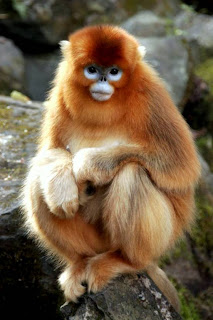The cabin
We were pleasantly surprised by the neatly prepared 2 story cabin. The living room has 3 sofas and 1 small TV. The dinning area is adjacent to the living room, where an 8 person dinning table sits. The Ouachita Lake is right outside the north-facing dinning area window.
The cabin has 3 bedrooms, two in the first floor,one in the loft,two bathrooms, one on each floor. The first floor bedroom each has one full bed, and the second floor has two full beds. We will need at least 1 person sleep on
The fully equipped kitchen has basic utensils, stoves, oven, and microwave - which would allow us to cook gourmet meals, bake cookies and make popcorn.
There is a deck to the cabin, right on the shoreline of Lake Ouachita. It is a perfect place to enjoy breeze from the lake, the chirping of birds or just for some fresh air.
A feast for every meal!
Both families brought a lot of food: meat, rice, bread, vegetable, fruit, chips and drinks.
Our breakfast was quite sophisticated - we would have congee (rice porridge), mantou (steamed buns), scrambled eggs, pickled turnips and bacon for one morning. The next day we would change mantou to youtiao (fried bread stick). We then switched youtiao to baked tortillas! I exclaimed at the first breakfast "We eat better here than at home!!" Only the fourth and last breakfast, we had more common food: cereal, milk, bread and fruit.
Each dinner was a big project. Lily and the Grandpa would take more than an hour to prepare and cook all the dishes. In addition to common dishes (bean sprouts, sliced potatoes, celery, bok choy, peppers, bean curd ..), we would also have a platter of BBQ rib, or beef, or chicken!! Grandpa would worry at the start that there would not be enough food for 9 persons. He would then worry about if we could finish the food after cooking. Despite all the snacks and drinks before dinner, we finished almost all the food every day.
It was fitting that we watched food channel reality show "Chopped", which featured 4 chefs cooking a full course meal - appetizer, main course and dessert.
Card games and Popcorn
The first night, after a delicious meal, the boys were immersed in games, while Emily was watching TV by herself.
After half an hour or so, "Let us play cards" - I suggested. Emily, her dad, Lily and I started to play, later Nick joined us.
Next day to entice our big boys away from games or silly children's show on TV, Lily added popcorn to night snack, and they came over to play. When all of them were in the play, one bag of popcorn was not enough!
The Fire
Another pass time the boys and girl had was to play fire in the grill.
We did not use the outside grill at all. Playing fire began on Sunday, when Justin and Tom started wood fire in the grill to dry their wet shoes after kayaking.
Finally the firewood was on fire, the boys and girl grilled chicken and potatoes from the fire before dinner. They ate the grills with their dirty hands and had a lot of fun!
The Shoreline
Skipping stone on the shoreline was another pass time for the boys and girl. Justin was quite interested in skipping the stone. After a few days practice, he could skip a stone on the water with 4 to 7 bounces consistently. Nick's passion was to collect good sticks for weapons.
The adults, joined the children skipping stone occasionally. They were more likely just strolling along the shoreline, to enjoy the view, or to chat, or to exercise. The splendid sunset pictures were captured when Lily and I strolled along the lake after the fourth dinner.
The vacation
We also had good sleeps - lights were out around 10pm for the children and adults, we usually stayed in bed after waking up - a rare leisure for working parents. Good food, good sleeps, Many of us gained a few ponds after the vacation.
We were talking about gonig back even before we left!
It was a wonderful vacation.

